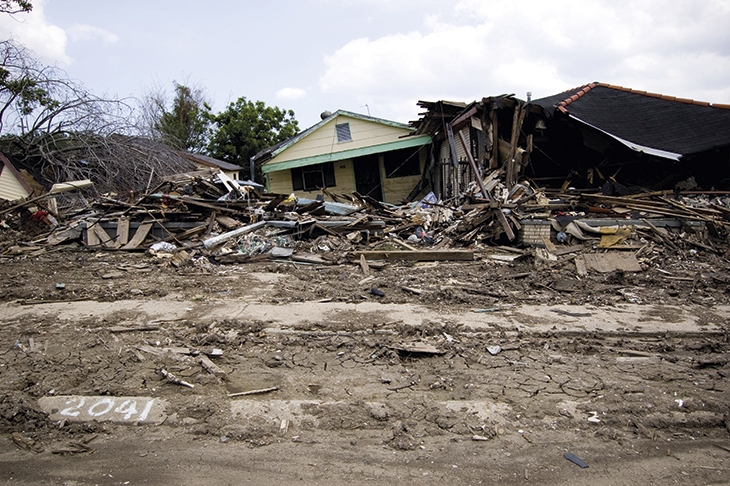Home, as James Baldwin wrote, is perhaps ‘not a place but simply an irrevocable condition’. Sarah M. Broom’s National Book Award-winning memoir The Yellow House is a sweeping social history and condition report of the New Orleans neighbourhood in which she grew up.
The youngest of 12 children in a blended household, Broom was born in 1979 in New Orleans East, seven miles from the iconic street lamps and streetcars of the French Quarter. Her mother, Ivory Mae, bought a house in 1961 with insurance money from the death of her first husband. Widowed at the age of 19 with two children and one on the way, Ivory Mae attended night school to obtain her diploma and worked as a nurse’s aide to support her family.
The Yellow House became so called with the addition of yellow siding, belying the decay within. Ivory Mae’s second husband, Broom’s father, was handy, but more adept at starting than finishing projects. After he died of an aneurism in 1980, the house settled into disrepair, and Ivory Mae’s pride in home-ownership gave way to a ‘shifty settling in of shame’. ‘You know this house is not all that comfortable for other people,’ she told her kids when they wanted to invite friends over. ‘What was worse? The house or hiding the house?’ asks Broom. ‘By avoiding showing people the place where we lived, we unmoored ourselves.’
The neighbourhood at large fared no better. Although it covers one-fourth of the city’s developed surface and houses 20 per cent of its population, it is truncated on tourist maps. Despite publicity touting the development as great living, New Orleans East failed to deliver on its promise of becoming a middle-class suburb. After the oil bust of the 1980s, it became increasingly impoverished and crime-ridden, leading to white flight.








Comments
Join the debate for just £1 a month
Be part of the conversation with other Spectator readers by getting your first three months for £3.
UNLOCK ACCESS Just £1 a monthAlready a subscriber? Log in